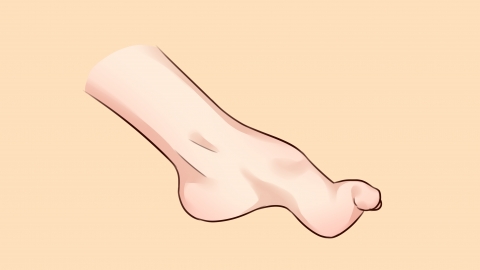Can a ganglion cyst on the top of the foot become cancerous?
Under normal circumstances, whether a ganglion cyst on the top of the foot can become cancerous depends on the specific characteristics and associated factors of the cyst. Ganglion cysts themselves are benign, with an extremely low risk of malignant transformation, although it is not absolutely impossible. If any abnormal symptoms occur, timely medical evaluation is recommended. The detailed analysis is as follows:

If the ganglion cyst on the top of the foot is soft in texture, clearly defined, freely movable, shows no significant growth over time, and causes no pain, numbness, skin ulceration or other abnormalities, and imaging tests confirm it as a typical benign cyst, then the likelihood of malignancy is very low. These cysts are usually benign lesions caused by accumulation of synovial fluid around joints or tendons, and some may even resolve spontaneously.
If the ganglion cyst on the top of the foot grows rapidly within a short period, becomes harder, has unclear borders, reduced mobility, and is accompanied by significant pain, tenderness upon pressure, changes in skin color, ulceration, or abnormal discharge, and imaging reveals irregular internal structures, there should be concern about possible malignant transformation. Although the probability of a ganglion cyst turning cancerous is extremely low, further examinations are necessary to determine the exact nature of the cyst.
After discovering a ganglion cyst on the top of the foot, avoid repeatedly pressing or rubbing it to prevent irritation and enlargement. If the cyst causes no discomfort, regular observation may suffice. However, if it enlarges or causes pain or other abnormalities, prompt medical evaluation is advised. Once diagnosed, follow the doctor’s recommendations for treatment—whether conservative monitoring or surgical removal—and schedule regular follow-up visits to monitor changes in the cyst and ensure early detection and management of any complications.







